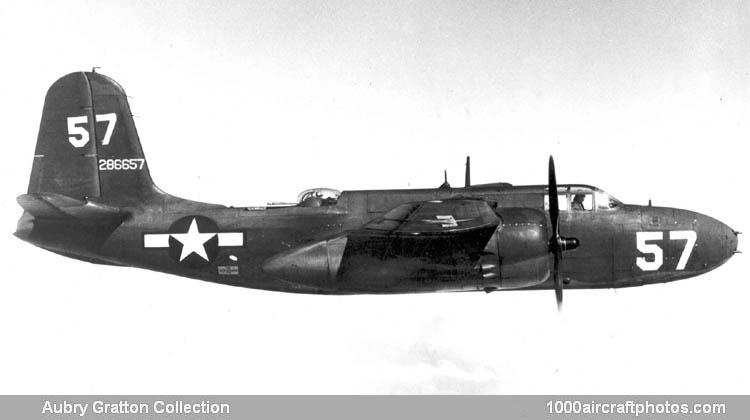12/31/2010. Remarks by Johan Visschedijk: "The principal A-20 variant used operationally was the A-20G, which followed the A-20C in production at Santa Monica and was the most-built of all DB-7 variants. This version was distinguished by a "solid" gun-carrying nose in place of the transparent bomb-aiming position, and was the first "attack" variant to have this feature, although similar gun batteries had been designed for the P-70 and, independently, in Britain for the RAF's Havoc night fighter.
In the early A-20G models the nose armament comprised four 0.787 in (20 mm) M2 cannon and two 0.50 in (12.7 mm) machine guns; single guns were carried in the dorsal and ventral position. With the new 3.0 in (76.2 mm) nose, the fuselage length became 48 ft 0 in (14.63 m); power plants were two 1,600 hp Wright R-2600-23 radial engines.
A second series of A-20Gs had the cannon removed in favor of four more 0.50 in (12.7 mm) machine guns, while a third series (from A-20G-20) was still further modified to have a 6 in (0.15 m) wider rear fuselage containing a Martin electrically-powered dorsal turret with two 0.50 in (12.7 mm) machine guns; under-wing bomb racks which doubled the bomb load from 2,000 to 4,000 lb (907 to 1,814 kg), and extra fuel tanks in the bomb-bay which, with a 374 gal (1,416 l) under-fuselage ferry drop tank gave a maximum endurance of 10 hr 30 min.
These final models of the A-20G had a maximum gross weight of 30,000 lb (13,608 kg), but normally operated at about 26,000 lb (11,793), when the speed was 317 mph (510 kmh). Production of the A-20G totaled 2,850, and another 412 A-20Hs were similar apart from having 1,700 hp R-2600-29 engines which increased the speed to 322 mph (518 kmh)."
